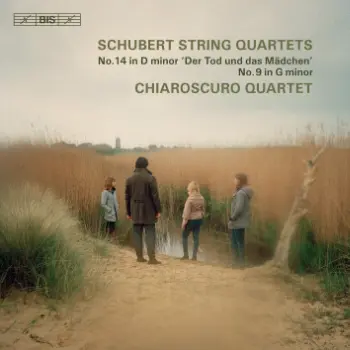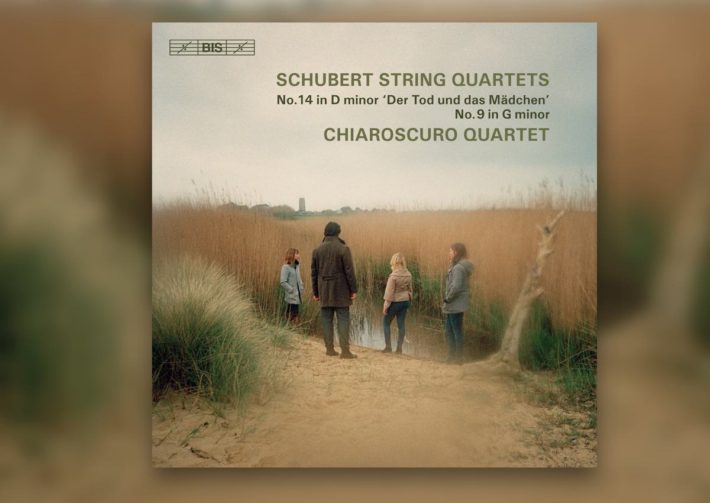There always seems to be two extreme approaches to Schubert’s “Death and the Maiden” String Quartet – The energetic, swift and sometimes rough approach (The Lindsays, Takács and Pavel Haas quartets), and the more inward, aristocratic, clear-headed approach (Italiano or Alban Berg quartets). The Chiaroscuro Quartet clearly belongs to the first group, but in many ways, it’s not easy to categorize with a certain approach or performance tradition of this frequently recorded work. Yes, there is the period instruments usage, but there is also a pure musical statement that’s impressive on any form or instrument.

Like on the Chiaroscuro’s previous Haydn albums on BIS, violinist Alina Ibragimova continues to impress with her personalized and truly memorable phrasing, so original this listener had to go back to the score and watch with awe how the composer’s original markings are meticulously observed, without sounding one bit studied. This also applies to the entire group; Rarely have I heard such a pronounced difference between a whisper of a pianissimo (pp) and the quietness of an ordinary piano (p). Crescendos and diminuendos are dully played with the utmost effectiveness to the spirit of the piece.
The Death and the Maiden / Matthias Claudius
The Maiden:
Pass me by! Oh, pass me by!
Go, fierce man of bones!
I am still young! Go, dear,
And do not touch me.
And do not touch me.
Death:
Give me your hand, you beautiful and tender form!
I am a friend, and come not to punish.
Be of good cheer! I am not fierce,
Softly shall you sleep in my arms!
Translation courtesy of ©️ Wikipedia
This poem by Matthias Claudius was used as the text for Schubert’s lied “Death and the Maiden”, the opening piano part of which is the theme of the second variation movement in this quartet. The Schubert lied emphasized musically the “two worlds”, if you will, of the maiden and the death. A lot of quartets, even the best of them, miss this crucial contrast in this movement and the others. The Chiaroscuro Quartet’s members not only grasp it, the embrace it full heartedly – listen to the breakout of the raw energy at 5:27, right after the mysterious preceding variation.
The wild tarantella that closes the piece is irresistibly stormy, with the final prestissimo test the limits of tempo, instruments, players and indeed the listener – most likely what Schubert intended. Here and in the rest of the album, the sound is not “beautified” in any way, and that’s a good thing. There is little doubt that a more easy on the ear sound will maybe please some listeners, but won’t be as effective to the interpretation. The recording quality implements this as well; It’s a close and a bit airless recording, as if played in a small room which these quartets have most likely been debuted. A more spacious acoustic would not have necessarily helped the musical approach here.
The acoustic has a bit more air to it in the early, youthful and less significant String Quartet D. 173 that accompany the main piece in this album. The Chiaroscuros give a good case for it and do find some jams in this piece – listen to the tension building at 3:30 in the first movement – but as a whole I would have loved to be given a “Rosamunde” quartet as a fill-up (or maybe it’s saved for a next volume?).
To sum up, this is a new, different version of “Death and the Maiden”, which you will want to return to many times, along with other leading versions that stood the test of time (Appearing below) – mainly the unforgettable Lindsays version for ASV, the Alban Berg’s mid 80’s sublime take, the legendary Italiano quartet’s from the mid 60’s and the more recent Pavel Haas Quartet’s version. This newcomer is no less memorable. That says a lot.
Schubert – String Quartet No. 14, D.810, No. 9, D.173
Chiaroscuro Quartet
BIS, SACD Hybrid 2268




















